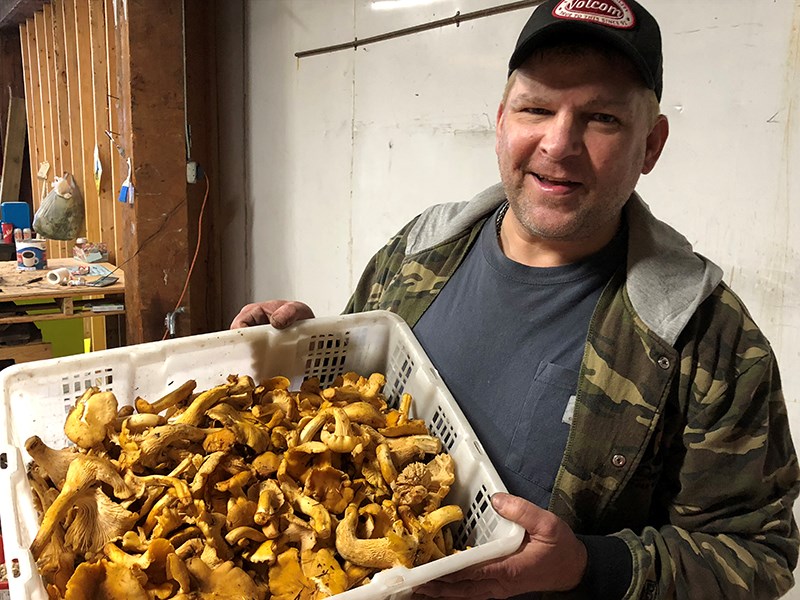So far, it has been an unusually promising season for local pine mushroom harvesters, according to T&D Shroom Shack owner Tory Charlton.
“It's looking like the crop we had here in Powell River way back in 1988,” he said.
Charlton said he remembers that particular harvest like it was yesterday, but like many locals involved in the edible wild mushroom industry, he needed to find other sources of income in ensuing years when the bounty ended.
“I anticipate a bumper crop like it's been in a few parts of our province this fall, which could then keep going until as long as December,” said Charlton, adding that currently there are not enough people out picking them fast enough, causing the mushrooms to mature and decrease in value.
Local professional forager Alexander McNaughton of Umami Consulting said he is hesitant to agree that there is a potential goldrush of pines in the local woods.
“There are pine mushrooms coming up, and yes, it’s a half decent year, but I wouldn’t say it’s for the record books or anything,” he said.
McNaughton has picked in many regions throughout the province and said other areas such as Pemberton have historically outperformed Powell River for pine mushroom harvesting.
“I’ve had days in Pemberton where I’ve picked 100 pounds per person,” he said. “There’s no way you’re going to do that in Powell River.”
McNaughton estimates 100 pounds would be the total value for the day in this region.
“I’d love it if there was thousands of dollars to be made here picking pines, but there’s not,” he added.
McNaughton said locally he goes after chanterelle mushrooms because of their more consistent dollar value as opposed to the fluctuating market for pines, also known as matsutake mushrooms. A practice Mcnaughton has noticed locally is what he calls dirty raking, where an entire hillside will be raked clean of all the moss to expose the mushrooms growing underneath.
“It’s a really bad practice because it destabilizes the underground pine mushroom mycelial network.”
When the moisture retaining moss and substrate is removed, the mushroom mycelium is then exposed to airborne pathogens and to drying out.
“That seems to be a common practice here,” said McNaughton.
Charlton and McNaughton are in agreement that when venturing out into local forests searching for mushrooms, whether for potential profit or just for fun, safety precautions must be taken. This includes carrying a compass, having appropriate gear and provisions, and leaving the forests better than they were found.
“Pack out what you pack in,” said Charlton. “Our forests are our children’s future.”



